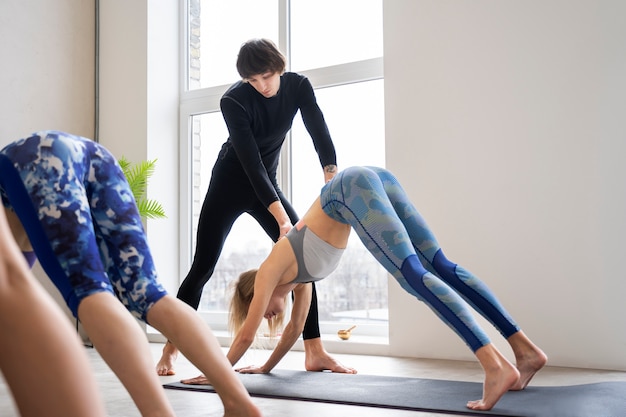
Yoga isn’t just about flexibility; it’s also great for your memory, heart, and bones, says Anna Magee.
These days, everybody seems to be into yoga, with Brits spending around £790 million a year on classes and gear. As yoga evolves with trendy variations like paddle-board yoga and dog yoga, its real health benefits are becoming clearer through scientific research.
Research from UCLA shows that three months of yoga and meditation can improve memory and reduce age-related brain changes better than typical memory exercises. Another study found it improved sleep for breast cancer survivors.
Take Lucy Edge, for instance. When she was 53 and battling depression, she opted for yoga instead of medication. She spent six months in India learning yoga and came back feeling happier and fulfilled, even if she didn’t get that perfect “yoga body.” She’s since written three books and started a section on her website listing clinical trials on yoga’s benefits for issues like arthritis, insomnia, and obesity.
If you’re into memory training with crossword puzzles or Sudoku, you might want to add yoga to your routine. UCLA researchers scanned brains and tested memory in adults over 55 after 12 weeks of either memory exercises or yoga and meditation. The yoga group showed better improvement in spatial and visual memories, reduced depression and anxiety, and increased stress resilience.
For heart health, yoga might be as good as conventional exercises like brisk walking. A comprehensive review in the European Journal of Preventative Cardiology found that yoga can lower heart disease risk. Since stress is a significant risk factor for heart disease, reducing it through yoga can be highly beneficial. Practicing yoga has also shown improvements in blood pressure, cholesterol levels, and weight.
If you’re new to yoga or looking for gentle options, kundalini yoga involves breathing techniques, meditation, and chanting mantras. Restorative yoga, which involves supported poses held for several minutes, is another excellent option to reduce stress.
Yoga can also help with chronic pain. Sarah Shone, a physiotherapist, integrated yoga into a back pain rehab program with impressive results. Yoga is recommended for low back pain by the National Institute of Clinical Excellence and can improve incontinence and bone density.
If you’re just starting out, let your instructor know about any health issues and start with gentle styles like Hatha or Iyengar yoga. For back pain or specific conditions, check if you qualify for subsidized yoga classes under exercise referral programs.
When choosing a yoga mat, consider how you will use it. For at-home use, a thicker mat is ideal for joint protection. If you’re constantly on the go, a lighter mat with a comfortable strap will be more convenient. Also, taller practitioners should opt for longer mats to avoid feeling cramped during practice.
Healthista recommends the Valka Yoga Elephant Cork Mat. It’s eco-friendly, made from organic cork and natural rubber, provides good joint support, and is antimicrobial and odor-resistant.
Adding a cork yoga block can help with stability and grip, essential for more challenging poses. Beginners and seasoned yogis alike can benefit from props like these.
Different yoga classes can suit various needs:
– Yin or Restorative classes focus on relaxation using props like blankets and bolsters.
– Vinyasa Flow links breath with movement in a dynamic sequence suitable for all levels.
– Iyengar yoga uses props to ensure proper alignment and is great for beginners.
– Anusara yoga combines alignment with flowing movements and upbeat music.
– Yoga Therapy is tailored to address specific injuries or illnesses with trained instructors.
New to yoga or experienced, the right props and classes can elevate your practice and improve overall health.